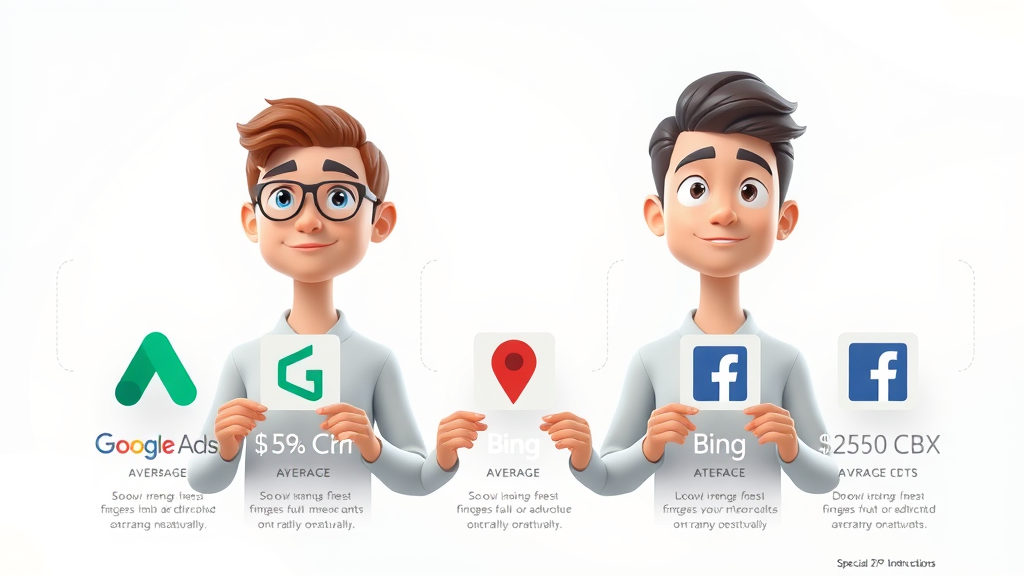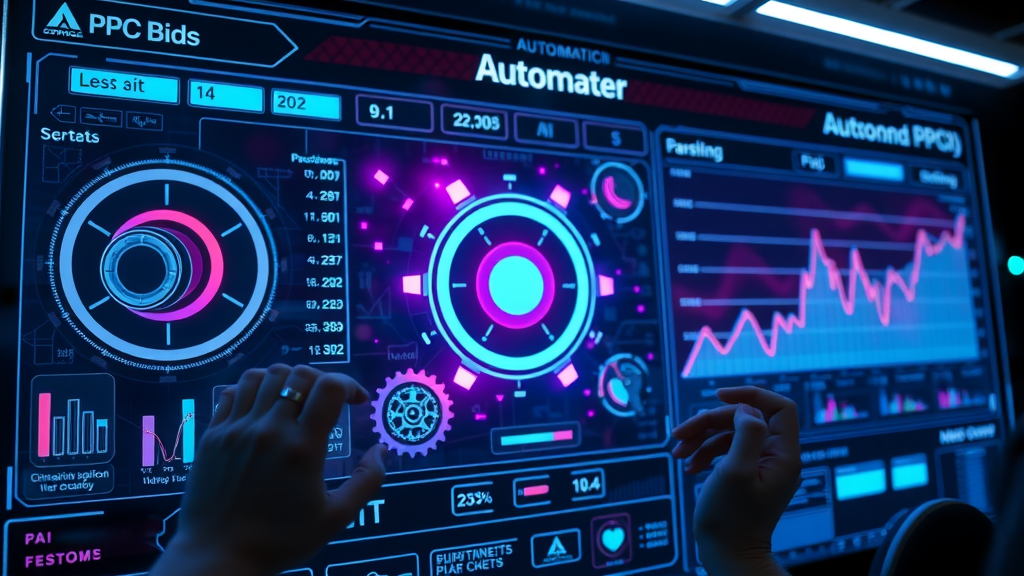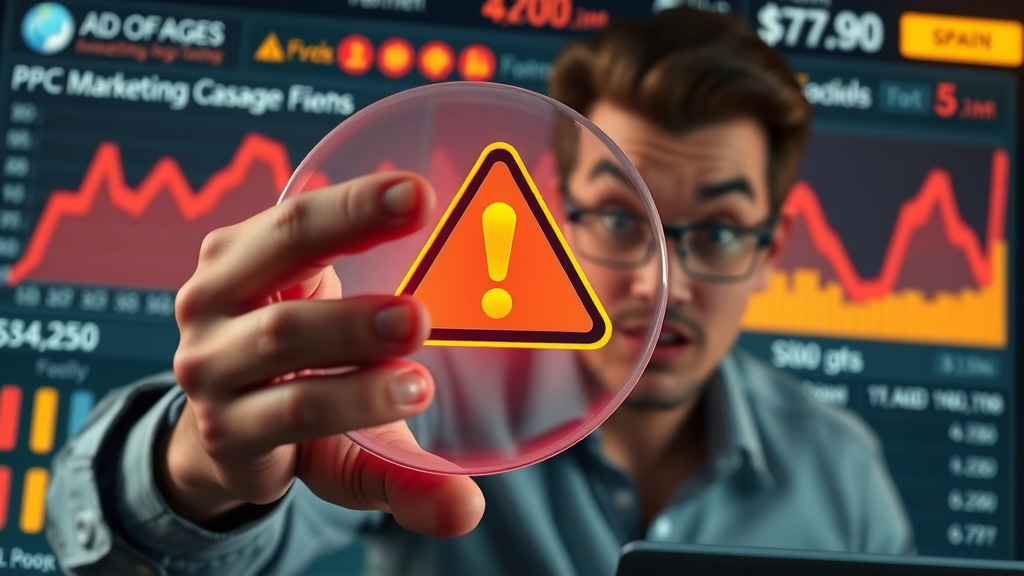Are you aware that for every dollar spent on pay-per-click advertising , businesses earn an average of $2 in revenue? Many small businesses waste thousands on pay per click advertising without seeing results. Yet when done right, every dollar spent can return double or more. If your campaigns feel like a money drain, this guide will show you how to fix that starting now. Learn how to lower cost per click , improve ad relevance, and target the right search intent to boost your return. Inside you will find clear tactics, expert tips, and practical steps to cut costs and get real results from your online ads.T

Why Pay-Per-Click Advertising Matters: Surprising Numbers and Real Benefits
-
Did you know that businesses make an average revenue of $2 for every $1 spent on pay-per-click advertising? Discover how these results can transform your digital marketing strategy.
Pay-per-click advertising is not just another buzzword—it's a game-changer for businesses seeking measurable growth online. Unlike traditional forms of advertising, PPC ads offer unparalleled control over budget, audience targeting, and campaign results. Recent data reveals that for every dollar spent, businesses often generate double the revenue, making PPC a cornerstone of modern digital marketing efforts. Success, however, hinges on strategy. The difference between a profitable PPC campaign and one that hemorrhages budget comes down to understanding the data and focusing on efficient cost per click management.
By leveraging google ads , managing your ad groups, and targeting high-intent keywords, you position your business atop engine results pages, ahead of organic competitors. The key benefit? You only pay when users interact—no wasted impressions, just qualified leads. As search engines and social media continue to dominate online behavior, an optimized PPC ad strategy enables you to reach customers right when they're ready to act. In a digital world filled with noise, PPC advertising empowers your brand to cut through—capturing attention, conversions, and consistent returns.
Mastering Pay-Per-Click Advertising: Key Terms and Concepts You Must Know
-
Defining PPC ad and pay-per-click advertising
-
Understanding ppc advertising vs. click advertising
-
How cost per click influences digital marketing budgets
-
The relationship between google ad, google ads, and paid search
PPC advertising refers to the advertising model where advertisers pay each time a user clicks their ad. This guarantees that every dollar of ad spend is tied directly to user action, making it a highly accountable and data-driven model. Click advertising is a broader term encompassing various forms of paid promotion, while pay-per-click advertising usually references campaigns that show ads on search engines like Google or Bing. Paid search specifically refers to ads that appear in response to search engine queries, unlike display ads , which are shown on partner sites or on social media platforms as part of a broader digital marketing strategy.
Your cost per click is determined by factors such as your maximum bid, ad quality, and the relevance of your ad group structure. Understanding how google ad auctions work, how ad placement is decided, and how to differentiate between search ads , social media ads, and display campaigns is foundational for maximizing your return. By mastering these terms and principles, you'll make more informed decisions—setting competitive bids, structuring ad groups for success, and using analytics to lower costs while boosting conversions.
|
|
|
Comparison of PPC Ad Platforms, Average Cost Per Click, and Market Share |
|
PPC Platform |
Average Cost Per Click (CPC) |
Global Market Share |
|---|---|---|
|
Google Ads |
$1.00 - $2.00 |
~70% |
|
Bing Ads |
$0.80 - $1.60 |
~10% |
|
Facebook Ads |
$0.50 - $1.50 |
~15% |
|
Other Platforms (LinkedIn, Twitter, etc.) |
$1.20 - $3.00 |
~5% |

Optimizing PPC Advertising to Reduce Your Cost Per Click
One of the most powerful levers in pay-per-click advertising is reducing your cost per click (CPC). Lowering CPC means you acquire more clicks, leads, and sales for the same budget, skyrocketing your campaign ROI. Achieving this requires a deep understanding of Google Ads’ quality score, selecting precise keywords, and structuring your ad groups for relevance. When executed correctly, optimization strategies can mean the difference between high ad spend and cost-effective, results-driven marketing.
It’s not just about lowering bids; it’s about increasing ad relevancy, aligning ad copy to searcher intent, and ensuring your landing page delivers value. Review your ad group structure regularly to make sure ads and keywords are tightly connected. Common pitfalls, such as broad match keyword overuse or neglecting negative keywords, can inflate your costs significantly. By mastering these aspects, you’ll position your ppc ad for higher rankings and lower CPCs across Google search, social media, and beyond.
How Quality Score Impacts PPC Ads and Cost Per Click
-
Google Ads' quality score and its effect on your ad spend
-
Techniques to improve quality score and boost ROI
-
Mistakes in ad group structure that raise costs
The quality score is Google Ads’ internal measurement of how well your ad, keywords, and landing page align with user intent. A high quality score can substantially reduce your cost per click , making every ad dollar go further. Google rewards advertisers who consistently provide relevant, helpful experiences; this means tightly themed ad groups and highly clickable ad copy.
To improve your quality score, focus on keyword relevance, include keywords in your ad text, and direct users to landing pages that deliver exactly what your ad promises. Avoid mixing unrelated topics in one ad group—this dilutes keyword relevance and hurts your quality score. Common mistakes, such as loosely organized ad groups or generic ad copy, often lead to wasted spend and missed opportunities. Mastering quality score is one of the most vital steps in maximizing pay-per-click advertising efficiency.
Building High-Performing PPC Campaigns: Strategies for Effective Pay-Per-Click Advertising
PPC campaigns flourish when built on a solid foundation. This means in-depth keyword research, disciplined ad group segmentation, and continuous performance monitoring. The best results come from targeting users at the precise moment they're searching for your solutions—not after the fact.
Successful campaigns balance broad reach and precision targeting. Segmentation of ad groups allows for granular testing of ad copy, bid adjustments, and landing page variations. Use a combination of search engine data, competitor analysis, and ongoing campaign metrics to refine your approach. Over time, your ppc advertising will become more efficient, driving stronger ROI with every iteration.
Researching Keywords to Lower Cost Per Click in PPC Advertising
-
Paid search keyword research tools and best practices
-
Negative keyword strategy for higher PPC ad efficiency
Effective keyword research is the foundation of any profitable pay-per-click advertising strategy. Utilize advanced tools—such as Google Keyword Planner, SEMrush, and Ahrefs—to identify high-converting, cost-effective keywords relevant to your business. Focus on specific long-tail keywords that signal high intent, as these often have lower competition and, correspondingly, lower cost per click .
Implementing a robust negative keyword strategy is equally crucial. By excluding irrelevant search queries, you prevent wasted ad spend and improve overall ppc ad efficiency. Regularly review your keyword performance reports, adjusting bids and eliminating underperformers. As your dataset grows, your targeting becomes sharper—reducing CPC, increasing click-through rates, and delivering more qualified leads to your pipeline.

Structuring PPC Campaigns and Ad Groups for Success
-
Ad group organization tips for better click advertising performance
-
Segmentation of ad groups in PPC campaigns
The structure of your ppc campaign can make or break its success. Organize your ad groups by keyword theme, product category, or target audience for better relevance and easier management. Each ad group should have a focused set of keywords and highly relevant ad copy that matches user search intent. This improves quality score and ensures that your ads earn more clicks at a lower cost per click .
Segmentation is key. Split large groups into narrow segments—whether you're targeting different products, locations, or buyer personas. This allows for more granular budget control, more personalized ad testing, and easier analysis of PPC campaign performance. Over time, iterative improvements to structure will amplify your overall pay-per-click advertising results and profitability.
Using Google Ads and PPC Software to Maximize Pay-Per-Click Advertising Results
Today's ppc advertising landscape is shaped by technology. Tools like Google Ads and advanced PPC management software now offer automation, real-time analytics, and AI-powered optimization to supercharge your results. Harnessing these systems not only streamlines your workflow but also ensures you never miss out on key opportunities to reduce cost per click and grow revenue.
From automated bid strategies to dynamic copy testing, harnessing technology gives your business an edge. The right combination of human insight and machine intelligence can reveal hidden insights, catch budget-draining trends early, and make sure each ad dollar works as hard as possible. Whether you manage PPC ads in-house or use an agency, getting familiar with smart software will keep your campaigns sharp and competitive.
Leveraging Automation and AI for Smarter PPC Advertising
-
Automated bidding tools to manage cost per click
-
AI-driven reporting for actionable insights in ppc campaigns
Automation in pay-per-click advertising has revolutionized the way advertisers manage ad spend and campaign performance. Automated bidding tools, like those in Google Ads , can automatically adjust your bids to hit target positions, maximize conversions, or reach CPA goals. These systems take real-time data—such as device, location, and audience behavior—into account to set the right maximum bid every time. The outcome: improved efficiency, reduced cost per click, and better campaign results with less manual oversight.
Artificial intelligence is taking things further with AI-driven reporting and predictive analytics. These capabilities identify trends, flag anomalies, and recommend optimization steps for your active ppc campaigns . By embracing smart technology, you simplify complex tasks—leaving more time for strategic planning. Whether you're running a single search ad or a global network of ad groups , AI and automation are your allies for sustainable growth.

Advanced Tactics: Boosting Quality Score and Ad Group Relevance in Paid Search
-
Writing compelling ad copy to increase click-through rates
-
Optimizing ad groups with relevant keywords and landing pages
-
A/B testing for continuous ppc ad improvement
When it comes to boosting your PPC campaign’s performance, a high quality score is only the beginning. Focus next on crafting irresistible ad copy that entices searchers to click. This not only improves your click-through rates but also enhances your ad's relevance scores across paid search and click advertising networks. Use strong calls to action and mirror the language your audience is searching for—they'll feel understood and more likely to convert.
Your landing page experience is critical. Ensure each ad group drives traffic to pages specifically designed for the keywords in that group, maintaining “message match” and a seamless journey from click to conversion. Layer in A/B testing to experiment with headlines, copy, visual elements, and offers. Every ppc ad you launch is an opportunity to learn—continuous testing and optimization turn marginal improvements into significant ROI gains.
Analyzing PPC Campaign Results: Tracking ROI and Campaign Adjustments
Effective PPC advertising doesn't end after your ads go live. The real growth happens when you analyze performance, adjust strategies, and optimize for better ROI . Key metrics to monitor include conversion rate, click-through rate, and, of course, cost per click . These tell you not only how many users interact with your ads, but how many convert into leads and sales—making it clear where to focus budget and effort for maximum return.
Use analytics dashboards in google ads or your third-party software to dig into ad campaign data. Track each ad group and keyword, monitor trends by device and geography, and quickly spot underperformers. Set up regular reporting intervals—weekly, bi-weekly, or monthly—to compare performance over time and ensure your campaigns are moving the needle.
Key Metrics: Conversion Rate, Click-Through Rate, and Cost Per Click Analysis
|
|
|
Common PPC Campaign Metrics and Industry Benchmarks |
|
Metric |
Industry Average |
Top Quartile |
|---|---|---|
|
Click-Through Rate (CTR) |
1.9% |
4%+ |
|
Conversion Rate |
2.4% |
5%+ |
|
Average Cost Per Click (CPC) |
$1.50 |
$0.75 |
|
Quality Score |
6 |
8-10 |

People Also Ask: Harnessing Pay-Per-Click Advertising Effectively
What is pay-per-click advertising?
Pay-per-click advertising is a digital marketing model where advertisers pay each time their ad is clicked, rather than for impression views. It’s commonly used in search engines like Google, where ads appear on results pages, as well as on social media and partner websites. The main advantage is direct cost control and the ability to track ROI precisely, since you know exactly how much you spend for each visitor your ad campaign attracts.
How effective is pay-per-click advertising?
PPC advertising can be highly effective because it targets people actively searching for your products or services. Since ads only appear to interested users, campaigns can achieve impressive click-through rates and conversions. With the right strategy—careful keyword selection, optimized ad groups, and quality landing pages— pay-per-click advertising can deliver some of the highest ROI within digital marketing.
What is a good ad cost-per-click?
A "good" cost per click (CPC) varies by industry, competition, and campaign goals. For many businesses, a CPC of $1 to $2 is average, but in competitive markets, $5 or more is not unusual. The best benchmark is your own profitability: as long as you are converting clicks into leads or sales at a positive ROI, your CPC is considered good.
Can you make money on pay-per-click ads?
Absolutely. With well-designed ppc campaigns , it's possible to turn ad spend directly into sales and profit. The key is to optimize your campaigns so that every dollar spent produces more revenue, using strategies such as improving quality score, refining keyword targeting, and testing ad and landing page variations. Businesses that track results carefully and adjust quickly often realize significant gains from pay-per-click advertising .
Expert Insights: Real Quotes from Industry Leaders on Pay-Per-Click Advertising
"PPC advertising is the fastest way to test your digital marketing ideas and get real-time feedback from your target audience." – Industry Expert
"Reducing cost per click is not just about bidding lower but optimizing every aspect of your PPC campaign." – Digital Marketing Thought Leader

Practical Checklist for Cost-Effective Pay-Per-Click Advertising Success
-
Identify and prioritize high-intent keywords for your ppc ads
-
Set up tightly themed ad groups within your ppc campaigns
-
Continuously monitor cost per click and adjust bids accordingly
-
Write compelling ad copy and use strong calls to action
-
Regularly review quality score factors and add negative keywords
-
Measure and analyze conversion rates for every ppc ad group

Common Mistakes in Pay-Per-Click Advertising and How to Avoid Them
-
Ignoring negative keywords in paid search
-
Using broad match keywords without monitoring performance
-
Failing to optimize landing pages for PPC traffic
-
Neglecting to split-test ppc ad creatives
Even seasoned advertisers make avoidable mistakes that drain budgets and undercut results. One common issue is failing to add negative keywords, resulting in irrelevant clicks that waste money. Another is over-relying on broad match keywords—while they can increase reach, they may also reduce ad relevance and raise cost per click if not closely monitored. Make a habit of reviewing keyword reports for any new ad campaign or ad group.
Bad landing pages can also sabotage PPC ad performance. If your page doesn’t match the promise of your ad or loads slowly, even the best campaign can fall flat. Last, some advertisers set campaigns and forget them, skipping crucial split-testing of ad copy, creative, and calls-to-action. Continuous testing and learning are non-negotiable for sustained pay-per-click advertising success.

FAQ: Your Top Pay-Per-Click Advertising Questions Answered
-
What is the average ROI from a PPC campaign? Industry averages vary, but most advertisers report an ROI between 100% and 200%, meaning for every $1 spent, $2–$3 is generated in revenue. The profitability of your ppc campaign will depend on targeting, ad copy, competition, and conversion rates.
-
How do you choose between paid search platforms? Consider your target audience and budget. Google Ads covers the largest audience, while Bing and Facebook can offer lower CPCs for specific niches. Analyze platform strengths and run test campaigns to find the best fit for your goals.
-
What’s the difference between PPC advertising and paid search? While both terms are often used interchangeably, paid search specifically refers to ads triggered by keywords on search engines. PPC advertising is broader, encompassing display ads and even social media promotions on a pay-per-click model.
-
How do you track conversions in click advertising? Use tracking tools such as Google Ads conversion tracking or third-party analytics to monitor actions after clicks (form submissions, purchases, calls). Tag your landing pages and integrate tracking with your ad campaigns for clear, actionable data.
Cut Costs and Elevate Your Pay-Per-Click Advertising Performance
-
Implement data-driven ppc ad strategies
-
Experiment with PPC campaign structure and automation
-
Continue education on new digital marketing and PPC trends
|
|
|
Summary Table: Steps to Reduce Cost Per Click and Improve PPC Campaign ROI |
|
Step |
Impact on Cost Per Click |
Benefit to ROI |
|---|---|---|
|
Optimize keyword selection |
Low |
Higher lead quality |
|
Improve ad and landing page relevance |
Medium |
Improve ad placement and conversions |
|
Automate bidding & reporting |
Medium-High |
Efficient budget use, lower CPCs |
|
Test and refine ad copy/creatives |
High |
Increase CTR and quality score |
|
Continuous review and adjustment |
High |
Ongoing cost savings, improved ROI |
Take the Next Step Toward Local Authority with Effective Pay-Per-Click Advertising
-
Become the local go-to expert in your field
-
Learn about our Authority Building System at LocalMarketingResource.com or call/text 352 266 0499
-
Start attracting real leads with optimized pay-per-click advertising

Conclusion
Apply these actionable strategies to optimize your pay-per-click advertising, cut your costs, and accelerate growth—then take the next step by becoming your area’s go-to PPC authority today!
 Add Row
Add Row  Add
Add 




Write A Comment